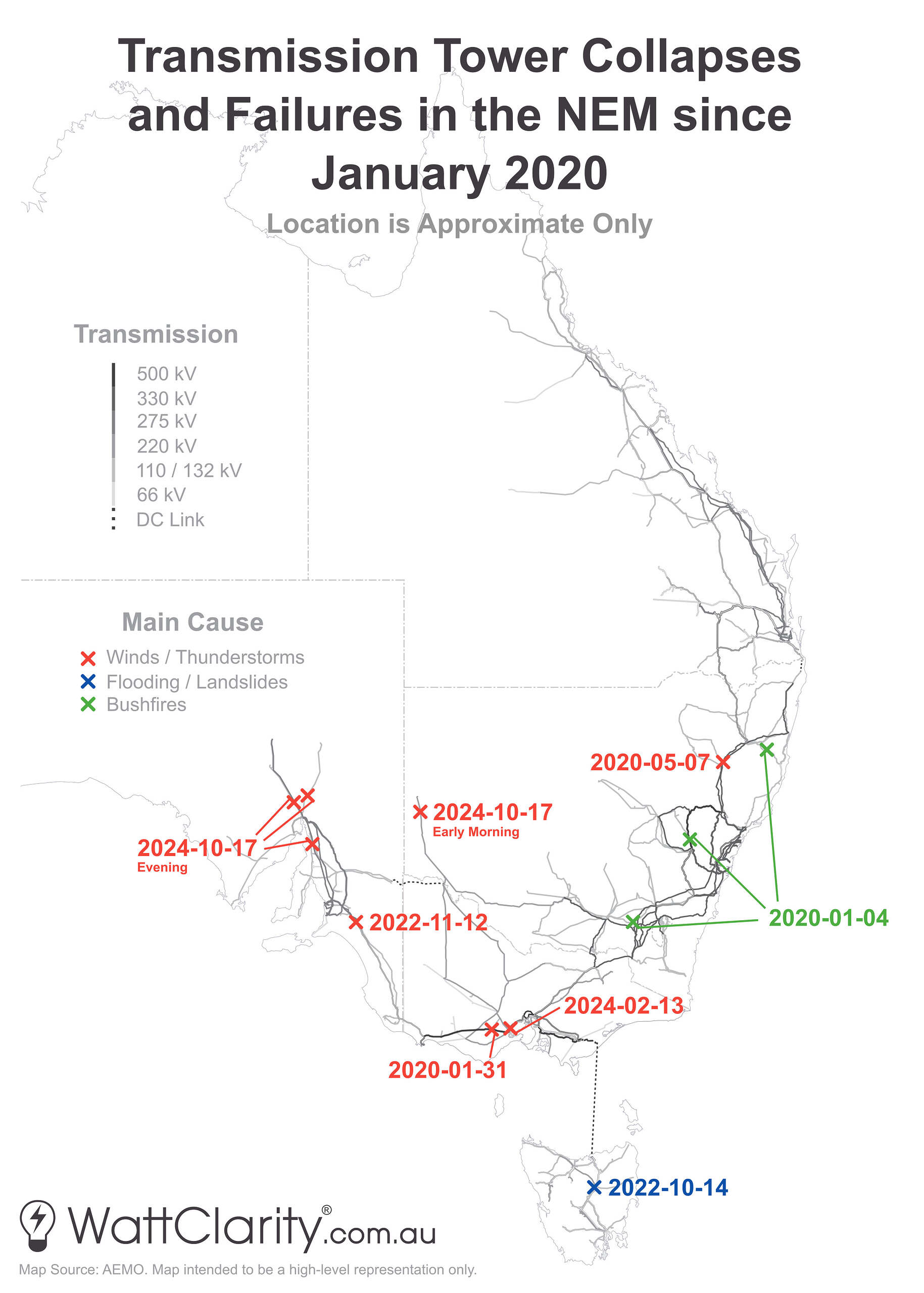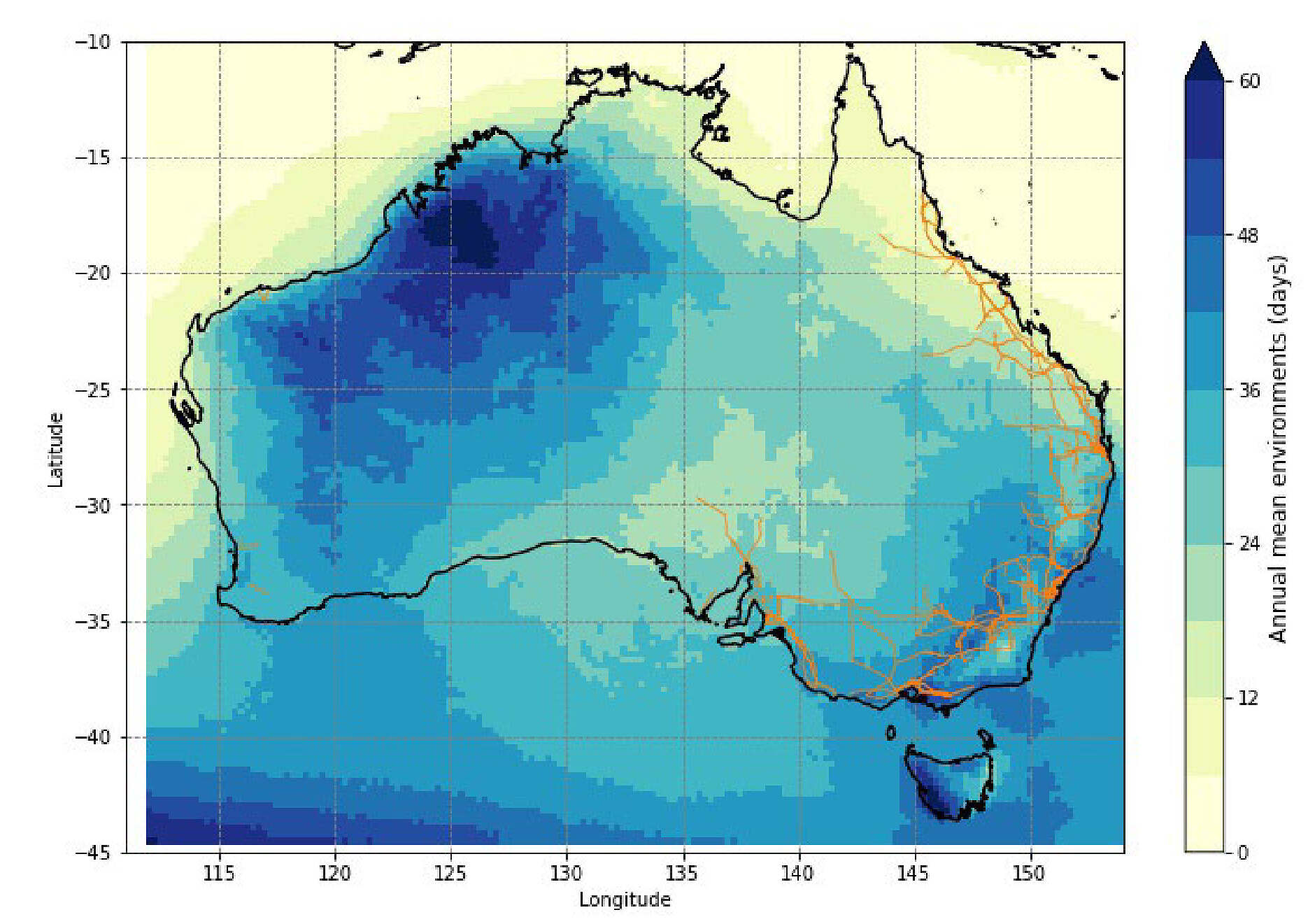Over the past several years, the team here at WattClarity has been trying to collate more data and provide more analysis about transmission tower failure incidents.
Yes… that probably reads as a very niche, nerdy and peculiar topic to outsiders… but historical evidence shows these incidents have had huge impacts on both financial and reliability outcomes for electricity generators and consumers.
Earlier in the year, I posed a list of questions to our readers about transmission development, after six towers collapsed near Geelong. These questions are worth considering again after seven transmission structures collapsed near Broken Hill, and twenty-nine in South Australia – roughly 24 hours apart – a little under two weeks ago.

Eight separate incidents have led to 62 transmission towers failing in less than five years.
There is a sense that these incidents have been increasing in recent years. By my count, we’ve now had 62 transmission structures fail in eight separate incidents since January 2020. I’ve counted the latest events as separate incidents (for our purposes as electricity market watchers) as they occurred in different regions and had different network impacts.
Some theories help explain why the occurrence of these incidents appears to be increasing. To broadly summarise the previous analysis and commentary, there are two factors at play:
- The age of the transmission structures.
- Outdated design standards. Dr John Holmes is a wind-loading expert (yes, they exist) who has been working in the field for more than 50 years. Earlier in the year, he wrote this article for us which explains that most of the older transmission structures in the NEM were designed in the 1950s to 1980s to handle synoptic wind events, as design methods were based on international practice from countries where those events occur more commonly. Severe Convective Winds (SCWs), a.k.a downbursts, pose a problem for under-designed transmission towers as they can generate a significantly higher wind load. The image below shows a diagnostic map of Australia with SCW risk.
- Corrosion and cyclical fatigue. Secondary to the point above, older towers may be subject to higher levels of corrosion and/or cyclical fatigue over their lifetimes – but each transmission network provider will have maintenance and upgrade processes which generally consider these factors.
- The intensity and frequency of the weather risk. e.g. severe convective winds, bushfires, flooding, etc. Recent scientific papers have examined whether the risk of SCWs is increasing with climate change – specifically this paper by Andrew Brown and Andrew Dowdy.

Statistical diagnostic for Severe Convective Winds in Australia between 1979 to 2018.
Source: ESCI
I attempted to compile a list of historical incidents of these transmission tower failures back in 2022. I only found nine such incidents between 2000 and 2020 when compiling that list. I will endeavour to update it at some point down the road – but in the meantime, if you spot any missing historical incidents there then I invite you to leave a comment below or contact me directly.


The major transmission lines *never* have the towers replaced throughout the their life because it’s so hard to get the lines out. The job to replace towers and restoring lines overnight (as required by AEMO) has to be done with temp towers. It is an enormous undertaking.